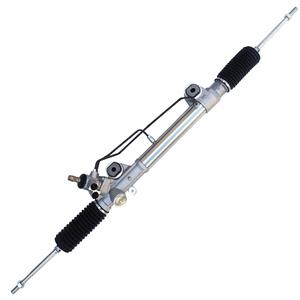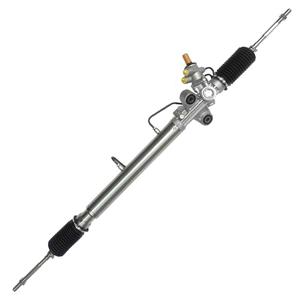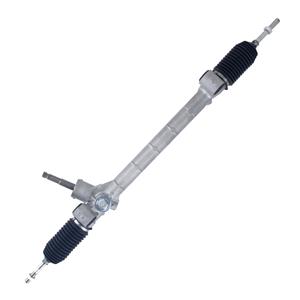What was the first car to use rack and pinion steering?
In the modern automotive industry, rack and pinion steering has become one of the most widely used steering mechanisms. It has won the favor of countless automakers and consumers with its simple, precise and reliable characteristics. However, when tracing back to the origin of this system, we can't help but ask: What was the first car to use rack and pinion steering?
This article will focus on this question, explore the development of rack and pinion steering in detail, reveal its importance in the automotive industry, and analyze the far-reaching impact of the first car using this system on the industry.
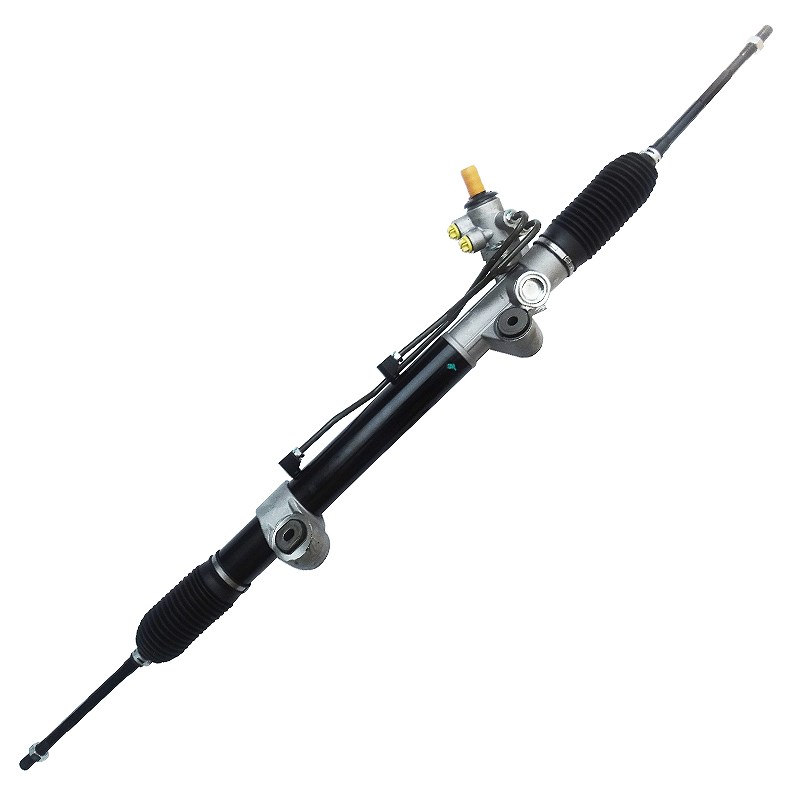
What is rack and pinion steering?
Rack and pinion steering system is a mechanical steering mechanism that mainly consists of two parts: a gear and a rack. When the driver turns the steering wheel, the force transmitted through the connecting shaft causes the gear (usually connected to the steering shaft) to rotate. The rotation of the gear drives the linear movement of the rack, which drives the wheel to turn. The key features of this system are its simple structure, low cost, and ability to provide accurate steering feedback.
Advantages of rack and pinion steering system:
● Precise steering control: Rack and pinion steering system can provide direct and linear steering feedback, and the driver's steering operation can be quickly converted into the steering angle of the wheel.
● Compact structure: Compared with other steering systems, rack and pinion systems take up less space, which is an important advantage for modern vehicles, especially small cars.
● Cost-effectiveness: Due to its simple design and manufacturing process, the production cost of rack and pinion steering system is low, which makes it widely used in various models.
Development background of automobile steering system
Early steering system
In the early days of automobile development, vehicles usually used helical gear steering system or worm gear steering system. These systems have complex structures and high manufacturing costs. Especially when the vehicle is turning, the required turning force is large, which makes the driver very laborious when maneuvering. In order to improve this situation, automotive engineers are constantly looking for new steering solutions.
Invention of rack and pinion steering system
The invention of rack and pinion steering system can be traced back to the late 19th century and early 20th century. The earliest design concept originated from the gear transmission system of industrial machinery, but its application in the field of automobile steering was a huge innovation. Although the system was simple in design, it greatly improved the handling of the vehicle and gradually replaced the earlier complex and impractical steering systems.
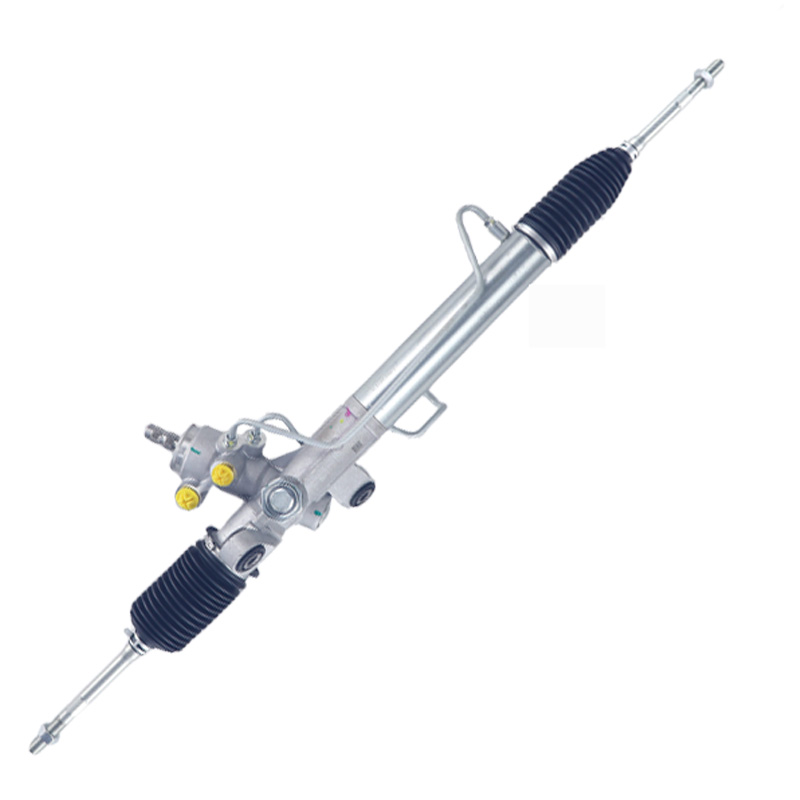
What was the first car to use a rack and pinion steering system?
Selected innovative model: Citroën 2CV
The Citroën 2CV was the first car in the world to use a rack and pinion steering system extensively. The car debuted at the Paris Motor Show in 1948 and became a major highlight of the automobile market at the time. Although some car manufacturers had already applied rack and pinion steering systems in experimental models before, the appearance of the Citroën 2CV marked the official use of this system in mass-produced models.
Background introduction of the Citroën 2CV
The Citroën 2CV is a small economical car designed by the French car manufacturer Citroën. Its design concept was to provide the public with an affordable and simple-to-maintain vehicle to adapt to the economic conditions in post-war Europe. The 2CV was originally designed to be able to travel on rugged country roads, and the load capacity must also meet the needs of farmers. Its structural design is extremely simple, the body is light, it is equipped with an air-cooled engine, and it has extremely high fuel efficiency.
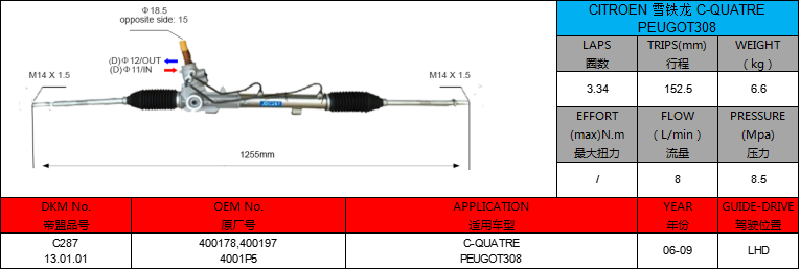
Why does Citroen 2CV use a rack and pinion steering system?
The main reasons why Citroen 2CV uses a rack and pinion steering system are as follows:
● Simplified design: The overall design of 2CV emphasizes simplicity and practicality, and the rack and pinion steering system has a simple structure, which is suitable for the design concept of this economical car.
● Low manufacturing cost: During the post-war economic recovery period, production cost was an important factor for manufacturers to consider. The low-cost advantage of the rack and pinion steering system makes it an ideal choice for 2CV.
● Easy operation: Compared with the early helical gear or worm gear system, the rack and pinion steering system is more efficient in providing power assistance. Even without power steering assistance, the driver can easily operate the steering wheel, which is very important for daily driving.
Market response of 2CV
Citroen 2CV has achieved great success after its launch, and its simple and durable design has won wide market recognition. In particular, its rack and pinion steering system has become an important guarantee for its good handling. The hot sales of 2CV not only consolidated Citroën's position in the economy car market, but also prompted more automakers to pay attention to and adopt this innovative steering system.
Popularization and development of rack-and-pinion steering system
Follow-up by other automakers
With the success of Citroën 2CV, other automakers began to notice the advantages of rack-and-pinion steering system. From the late 1950s to the early 1960s, more and more European car brands, such as Volkswagen and Renault, began to adopt rack-and-pinion steering systems in their new models. During this period, rack-and-pinion steering systems gradually expanded from economy cars to medium-sized and large vehicles.
Transformation of the American auto market
While rack-and-pinion steering systems gradually became popular in the European auto market, the American market was relatively slow to accept this system. In the 1960s, the American auto market was still dominated by hydraulic power steering systems. However, with the entry of European automakers and the increasing demand of consumers for more precise steering, rack-and-pinion steering systems gradually gained a foothold in the American market. Especially in the field of compact and mid-sized cars, the advantages of rack-and-pinion systems have been fully utilized.
Technical improvements of rack and pinion steering systems
Over time, rack and pinion steering systems have also undergone many technical improvements. These improvements are mainly concentrated in the following aspects:
● Improvement of materials: Early rack and pinion systems usually use steel materials, which are strong and durable, but heavy. Later, with the development of material science, lightweight alloys and composite materials were gradually adopted, which further reduced the weight of the system and improved durability.
● Addition of power-assist system: On the basis of the purely mechanical rack and pinion steering system, the addition of hydraulic power-assist or electric power-assist system makes it easier for the driver to steer and improves the driving experience.
● Improvement of precision: The development of modern manufacturing technology has greatly improved the processing accuracy of the rack and pinion system, thereby improving the accuracy and response speed of steering.
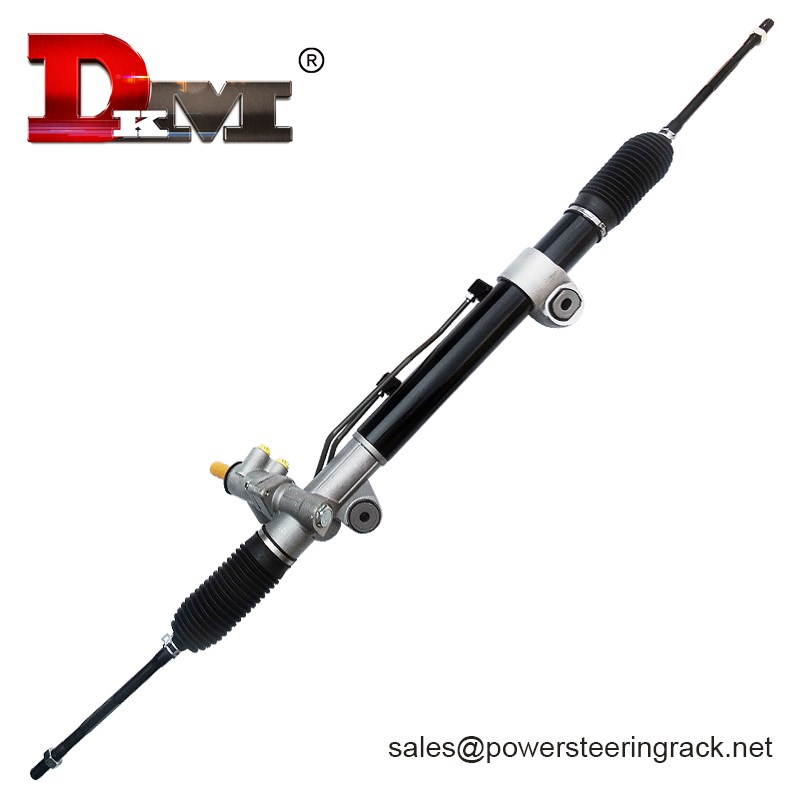
Modern applications of rack and pinion steering systems
Applications in small and compact cars
Today, rack and pinion steering systems are widely used in the small and compact car markets around the world. Its compact structure, low cost and easy operation make it the first choice in this market segment. Whether on urban roads or on rural roads, rack and pinion steering systems can provide a smooth and accurate steering experience.
Application in high-performance and sports vehicles
As rack and pinion steering technology continues to improve, it is gradually being used in some high-performance and sports vehicles. In these models, the rack and pinion system can provide more direct and precise steering feedback, enhancing driving pleasure. At the same time, the addition of the power assist system allows the driver to easily control the vehicle while enjoying the fun of control.
Application in commercial and heavy vehicles
Although the rack and pinion steering system is designed to be more suitable for light vehicles, with the advancement of technology, this system has gradually entered the commercial and heavy vehicle market. By combining with the electric power assist system, modern rack and pinion steering systems can provide sufficient steering assistance for these large vehicles without sacrificing steering accuracy.

